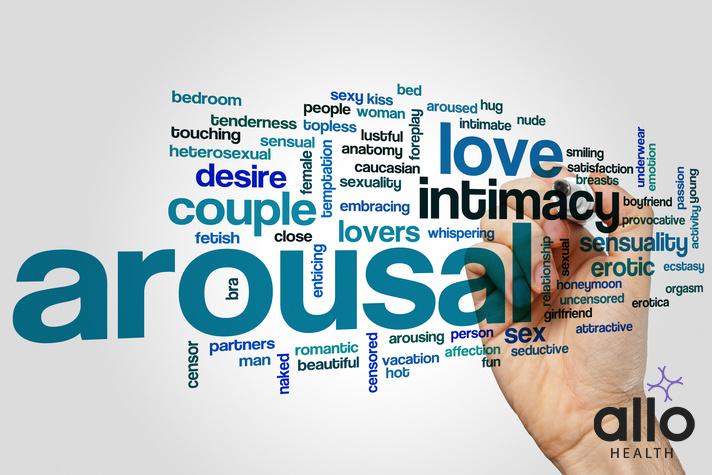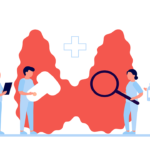Can Fear Cause Arousal?

"The following blog article provides general information and insights on various topics. However, it is important to note that the information presented is not intended as professional advice in any specific field or area. The content of this blog is for general educational and informational purposes only.
Book consultation
The content should not be interpreted as endorsement, recommendation, or guarantee of any product, service, or information mentioned. Readers are solely responsible for the decisions and actions they take based on the information provided in this blog. It is essential to exercise individual judgment, critical thinking, and personal responsibility when applying or implementing any information or suggestions discussed in the blog."
“Can Fear Cause Arousal?” delves into the complex interplay between fear and arousal, examining how the body responds to both emotions. This exploration navigates the physiological and psychological aspects, shedding light on adrenaline’s dual role. From the evolutionary perspective to the intricacies of the autonomic nervous system, the article unravels the mystery behind fear-induced arousal. Gain insights into the adaptive mechanisms that connect these seemingly contrasting emotions, offering a nuanced understanding of our primal responses. In unraveling this enigma, the article provides valuable perspectives for comprehending human behavior and emotional dynamics.
The Physiology of Fear and Arousal: How the Body Reacts to Stimuli
- Introduction: Delve into the intricate connection between physiology and emotions.
- Fight or Flight Response: Uncover the body’s primal reaction to perceived threats, activating adrenaline release.
- Autonomic Nervous System: Explore the role of the sympathetic and parasympathetic systems in regulating arousal.
- Hormonal Cascade: Understand the release of cortisol and other hormones influencing fear and arousal.
- Brain Circuitry: Examine the neural pathways involved in processing fear stimuli and triggering emotional responses.
- Physiological Manifestations: Detail the physical changes such as increased heart rate, dilated pupils, and heightened alertness.
- Chronic Effects: Discuss the long-term impact of sustained arousal on health and well-being.
- Individual Variations: Explore how individuals may differ in their physiological responses to fear-inducing stimuli.
- Coping Mechanisms: Highlight strategies to manage and regulate fear, promoting emotional resilience.
- Practical Implications: Discuss applications in psychology, stress management, and therapeutic interventions.
- Conclusion: Summarize the intricate interplay between stimuli, physiological responses, and emotional experiences.
The Role of Hormones in Fear and Arousal

The release of adrenaline during fear causes an immediate bodily response, but it’s the additional release of dopamine that makes the connection between fear and sexual arousal more significant. Dopamine is a neurotransmitter associated with feelings of pleasure and reward and helps to feel physiological arousal.
When we experience fear, adrenaline sets off a chain reaction in the brain that activates dopamine levels in the mesolimbic pathway. This can give rise to feelings of euphoria, which can also be felt during sexual arousal (a feeling of sexual arousal disorder). While fear can cause initial discomfort, the activation of dopamine can create an intense excitement and sensation of pleasure, which many people find thrilling.
The relationship between adrenaline and dopamine can have long-term effects on our behavior. People who frequently engage in activities that trigger the release of both hormones, such as extreme sports or horror movies, may develop a tolerance to the effects of dopamine. This can lead to a need for more intense experiences to achieve the same level of pleasure and reward.
Additionally, individuals who have experienced trauma or chronic stress may have altered levels of both hormones, which can impact their ability to experience pleasure and regulate their emotions.
The Psychology of Fear and Arousal
- Understanding Fear: Delve into the psychological underpinnings of fear, examining its origins and evolutionary significance.
- Neurobiology of Arousal: Explore how the brain processes arousal, from heightened awareness to the fight-or-flight response.
- Impact on Behavior: Analyze how fear and arousal influence decision-making, behavior, and cognitive processes.
- Emotional Regulation: Uncover strategies for managing and regulating fear, providing insights into mental well-being.
- Social Dynamics: Examine the role of fear in social interactions, including contagion effects and group behavior.
- Clinical Perspectives: Gain insights into fear-related disorders, their diagnosis, and therapeutic interventions.
- Coping Mechanisms: Discover healthy coping mechanisms and resilience strategies to navigate fear and arousal in daily life.
The Evolutionary Basis of Fear and Arousal
- Survival Instincts: Fear and arousal evolved as crucial survival mechanisms, alerting organisms to potential threats in their environment.
- Adaptive Responses: These reactions are adaptive, preparing the body for fight, flight, or freeze responses to enhance chances of survival.
- Neurobiological Roots: Deep-seated in the brain, fear and arousal involve intricate neural circuits and hormonal releases, ensuring rapid biological responses.
- Evolutionary History: Over millennia, organisms developed a heightened sensitivity to stimuli associated with danger, shaping the evolutionary trajectory.
- Arousal’s Role: Arousal, closely linked to fear, serves not only as a response to threats but also plays a role in motivation, learning, and reproductive behaviors.
- Cultural Influences: While rooted in evolution, fear and arousal on responses are also influenced by cultural and environmental factors, shaping individual and collective experiences.
- Psychological Implications: Understanding the evolutionary basis helps comprehend anxiety (anxiety on arousal, different anxiety levels) disorders, phobias, and other psychological conditions.
- Balancing Act: The delicate balance of fear and arousal is a testament to the intricate interplay between biology, environment, and the demands of survival.
- Ongoing Adaptation: Evolutionary forces continue to shape these responses, highlighting the dynamic nature of fear and arousal in the context of human existence.
The Intersection of Fear and Sexual Arousal
While fear response and sexual arousal may seem like contradictory emotions, they can coexist in some situations. For some individuals, a potential threat or danger can create a sense of excitement or increased sexual desire. This transition from fearful situations to actual arousal can be seen in films or thrill-seeking activities like skydiving, where fear quickly turns into a rush of excitement, or other scary situations, like watching a scary movie. For others, the use of fear and danger-themed fetish objects or fantasies can be linked to sexual arousals, such as handcuffs or even mild forms of sadism and masochism (arousal on reactions, arousal to rape, arousal to pornography, and arousal on disgust sensitivity), sometimes, in some life-threatening situations. The factor that plays a significant role in linking fear and the sexual arousal process is the stimulation of the mesolimbic pathway mentioned earlier, which signals the release of dopamine and enforces pleasure and arousal.
However, it is important to note that fear and sexual arousal can also have negative consequences. In some cases, individuals may experience fear during sexual encounters due to past trauma or anxiety, which can lead to a decrease in sexual desire or even sexual dysfunction. Additionally, the use of fear or coercion in sexual situations without consent is a form of sexual violence and can cause long-term psychological harm to the victim in real life.
Can Fear Increase Sexual Performance?
- Surprising Connection: Fear can trigger a physiological response akin to arousal.
- Adrenaline Boost: Increased fear increases adrenaline levels, enhancing blood flow and heart rate.
- Performance Impact: Some may experience heightened sexual performance under fear-induced arousal.
- Individual Variations: Reactions vary; fear may hinder or intensify sexual function based on personal responses.
- Psychological Aspect: Fear’s impact on mental state may influence sexual confidence and satisfaction.
- Consensual Exploration: Couples may experiment with controlled fear stimuli to enhance intimacy.
- Communication is Key: Open dialogue about comfort levels and boundaries is crucial for a positive experience.
- Professional Insight: Consultation with a healthcare provider or therapist is advised for personalized guidance.
- Ethical Considerations: Consent and mutual understanding are paramount; prioritize emotional well-being.
- Holistic Approach: Understanding fear’s role in sexuality can contribute to a more nuanced view of human experiences.
The Dark Side of Fear and Arousal

- Exploring Fear’s Depths: Delve into the dark side of fear, understanding its profound impact on the human psyche.
- Arousal Unveiled: Uncover the intricate connection between fear and arousal, examining how they intertwine in unexpected ways.
- Psychological Shadows: Examine the negative consequences of prolonged fear and heightened arousal on mental health.
- Physical Toll: Discover the somatic effects, from increased heart rate to elevated stress hormones, illustrating the toll fear takes on the body.
- Implications for Daily Life: Understand how the dark side of fear and arousal can influence decision-making, relationships, and overall well-being.
- Coping Mechanisms: Explore healthy strategies to navigate and manage fear, promoting resilience and mental fortitude.
- Balancing Act: Discuss the importance of striking a balance between arousal and fear, acknowledging their roles in the human experience.
- Beyond the Surface: Go beyond common perceptions, unraveling the nuanced layers of fear and arousal, shedding light on their complexity.
Strategies for Managing Fear and Arousal
If you find yourself struggling with fear or arousal, there are various ways you can cope. It helps to identify the source of your fear and take steps to resolve it if possible. For sexual arousal, find a healthy outlet through consenting adult activities or seeking help from a therapist. Mindfulness, exercise, and relaxation techniques can also help manage intense emotional states.
Myths And Facts About Fear and Arousal
- Myth: Fear is always negative.
- Fact: Fear can be a natural, adaptive response crucial for survival.
- Myth: Arousal is solely linked to sexual excitement.
- Fact: Arousal encompasses a range of physiological responses, including stress and excitement.
- Myth: Fear and arousal are always harmful.
- Fact: Moderate levels can enhance performance and alertness.
- Myth: Everyone reacts the same way to fear.
- Fact: Individual responses vary based on personality, experiences, and coping mechanisms.
- Myth: Suppressing fear is the best approach.
- Fact: Acknowledging and understanding fear is crucial for effective management.
- Myth: Arousal is always conscious.
- Fact: Autonomic arousal often occurs unconsciously, influencing emotions and behavior.
- Myth: Fear and arousal are isolated emotions.
- Fact: They are interconnected, influencing each other in complex ways.
Explore the nuanced realities of fear and arousal, debunking common misconceptions for a better understanding of these powerful emotions.
Most Asked Questions
-
Can fear trigger sexual arousal?
While fear and arousal are distinct emotions, some may experience arousal in response to fear due to heightened physiological responses. It varies among individuals.
-
Is fear-induced arousal normal?
Yes, moderate arousal during fear is a common physiological response. It prepares the body for action and can be adaptive. However, extreme or persistent fear may have adverse effects.
-
Why do some people find fear arousing?
Arousal in fear may be linked to the body's stress response, releasing hormones like adrenaline. Some individuals may find the heightened state of arousal pleasurable or exhilarating.
-
Can fear and arousal impact relationships?
Yes, fear-induced arousal can influence relationships. It may enhance bonding during shared thrilling experiences, but persistent fear or anxiety might strain relationships if not properly managed.
-
How to cope with fear-induced arousal?
Managing fear-induced arousal involves understanding triggers, practicing relaxation techniques, and seeking support. Professional help may be beneficial for those experiencing significant distress.







































